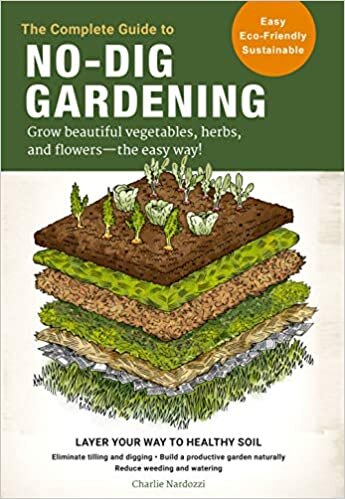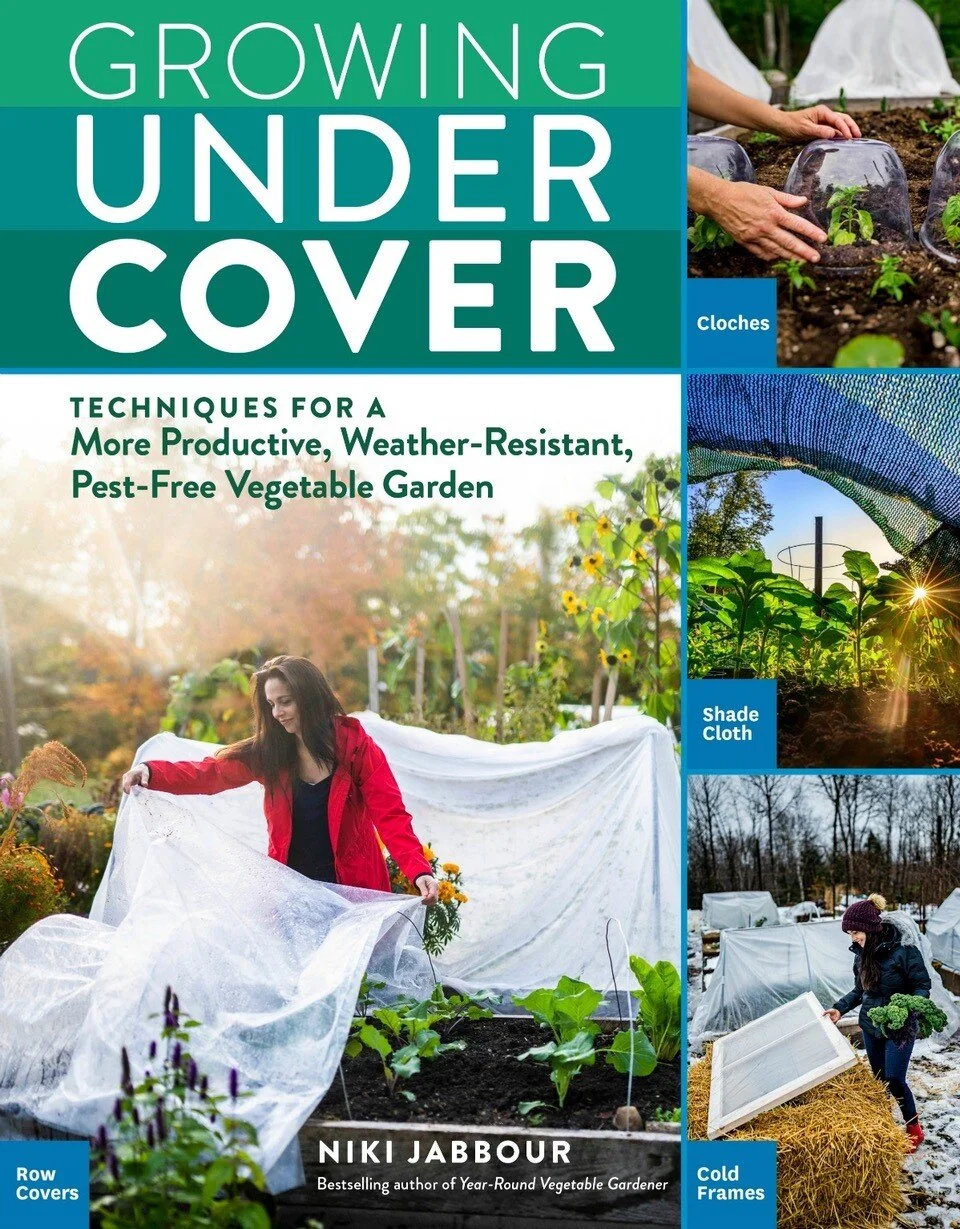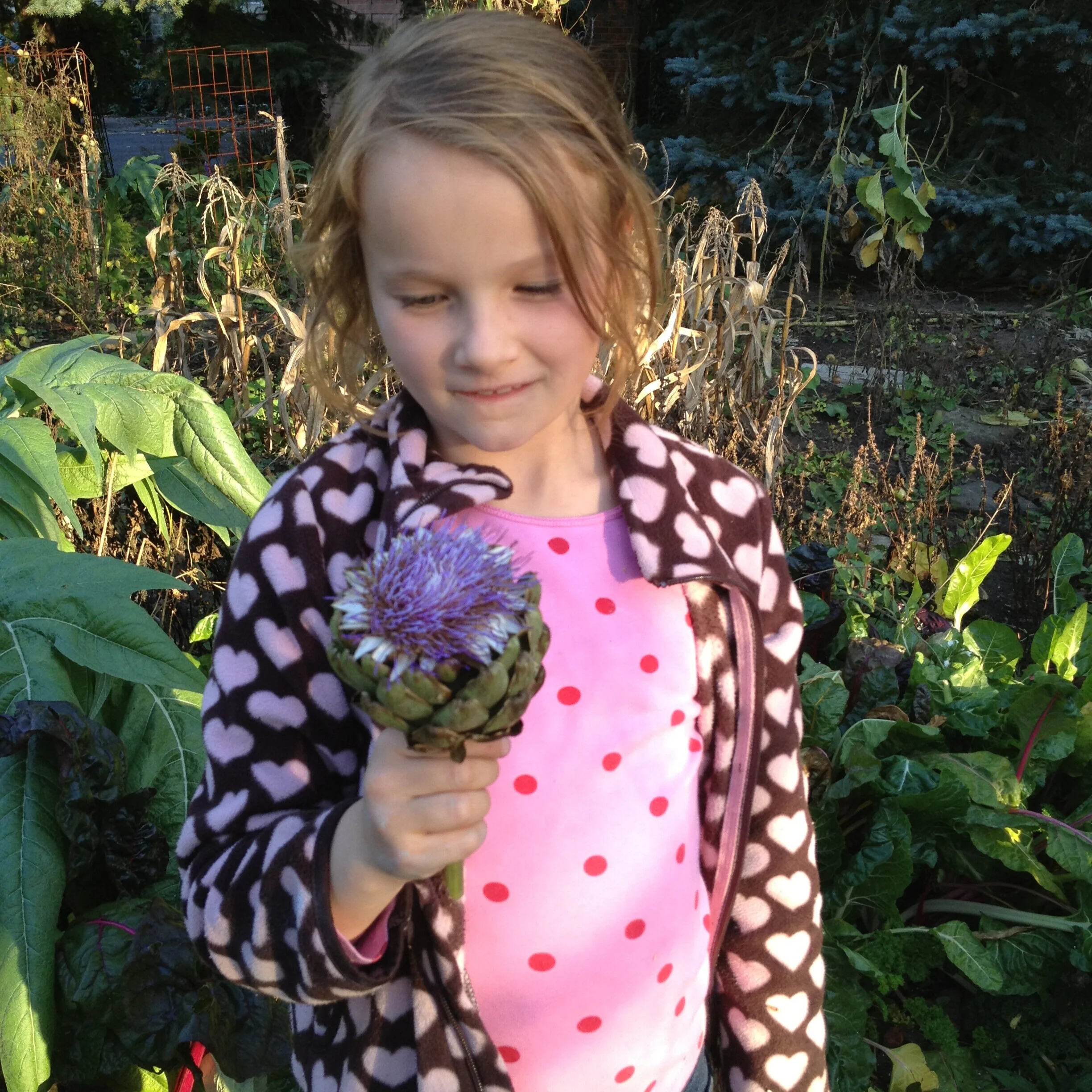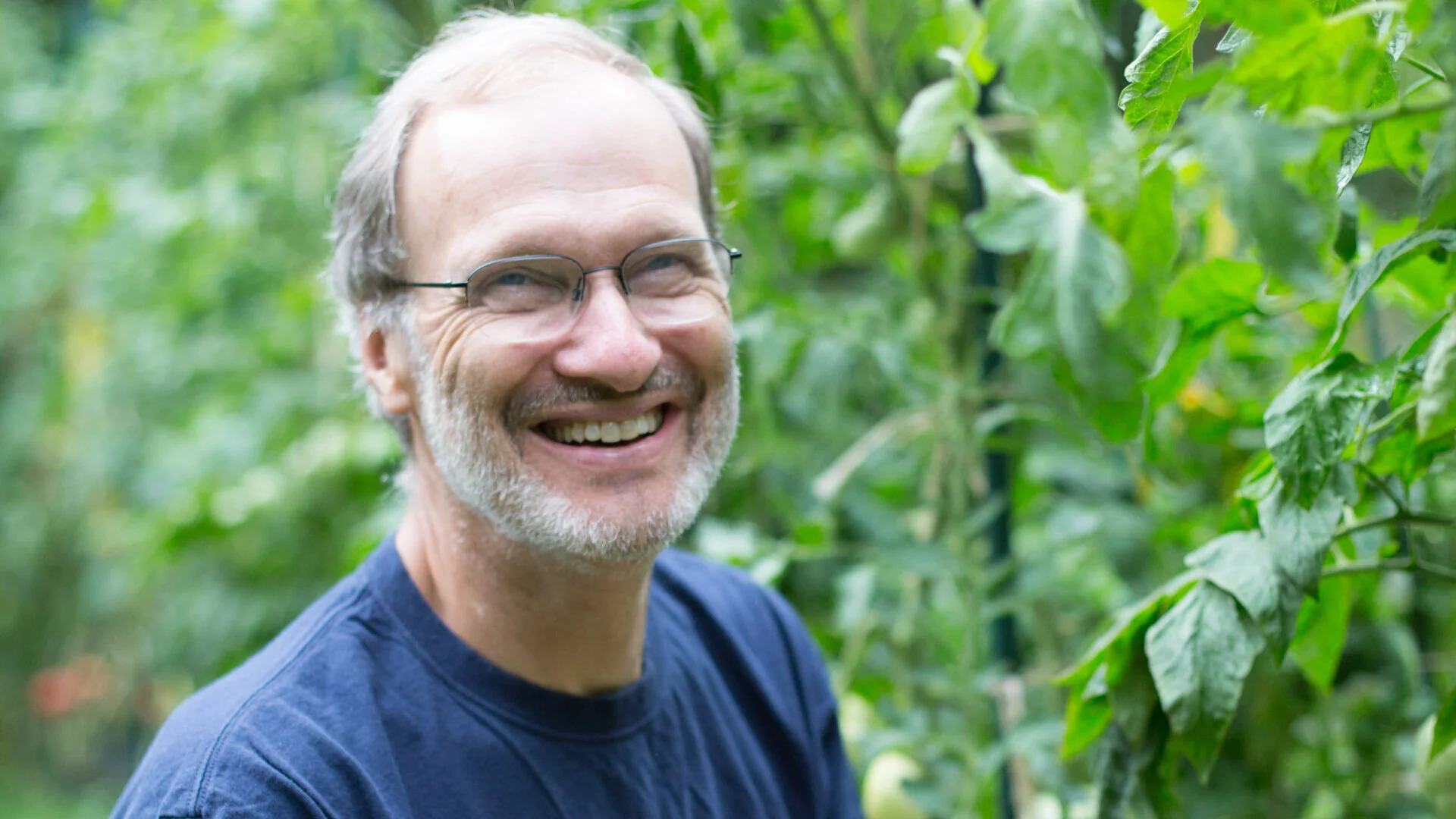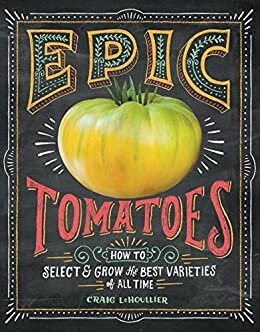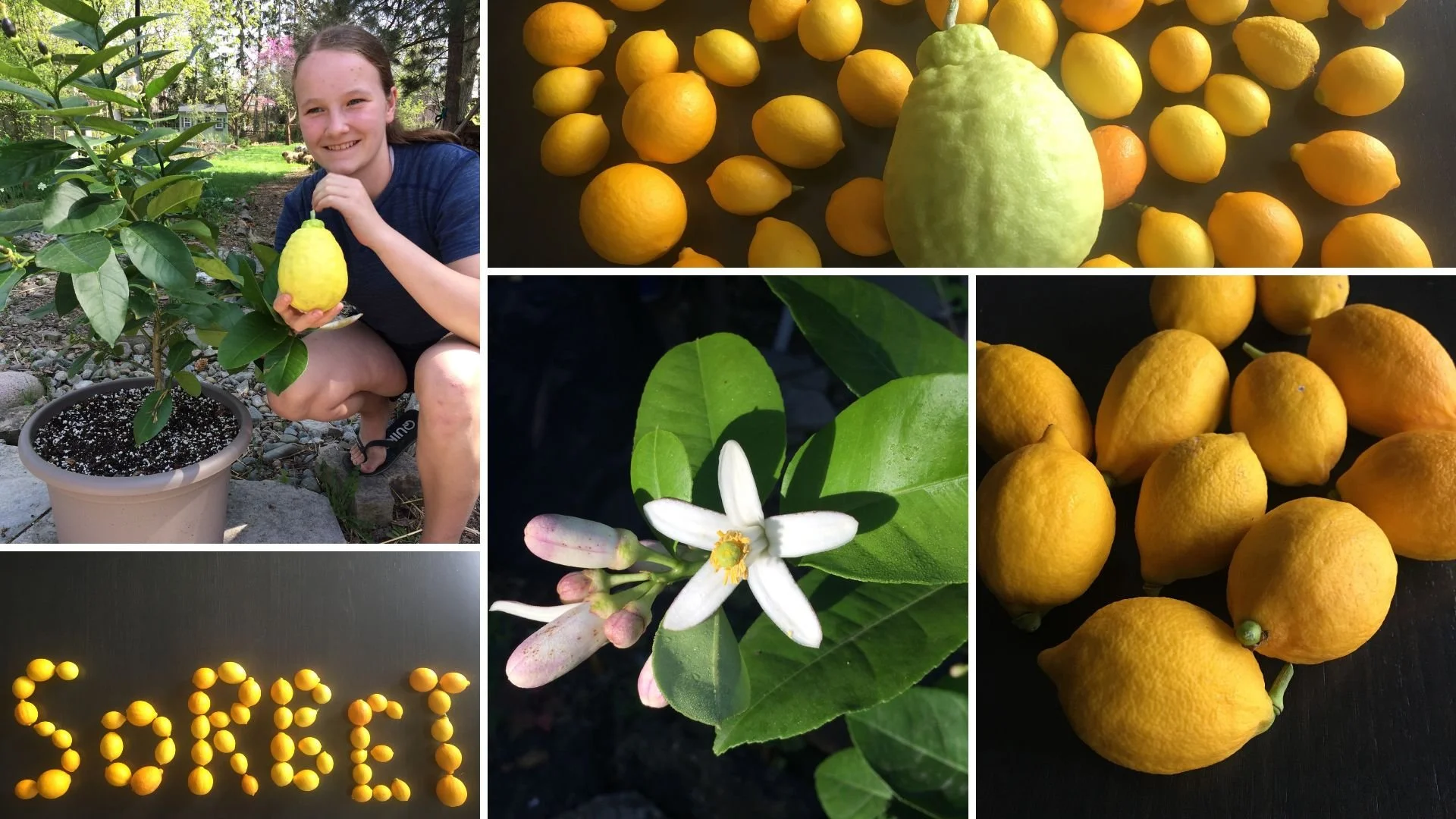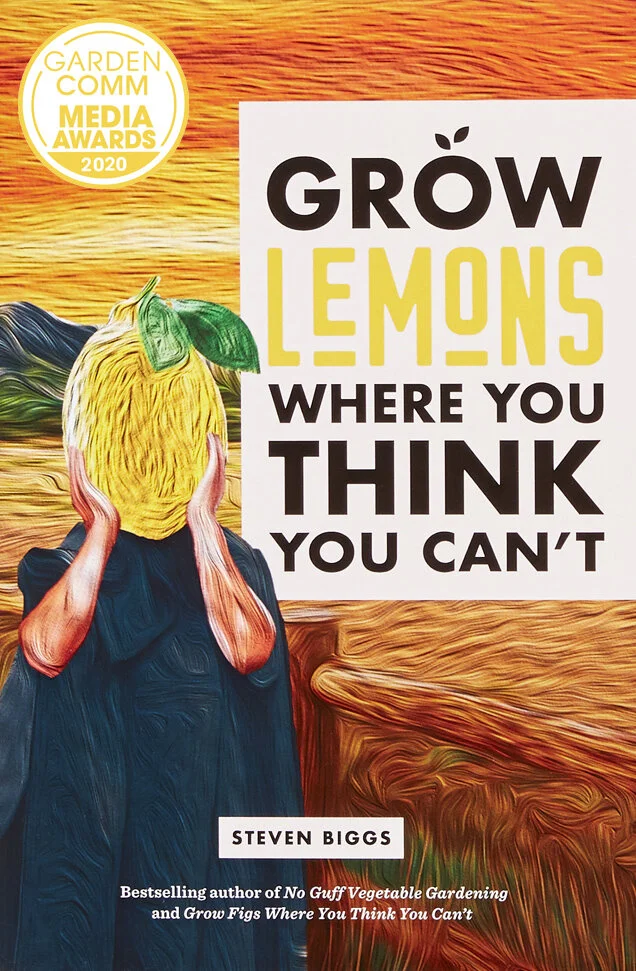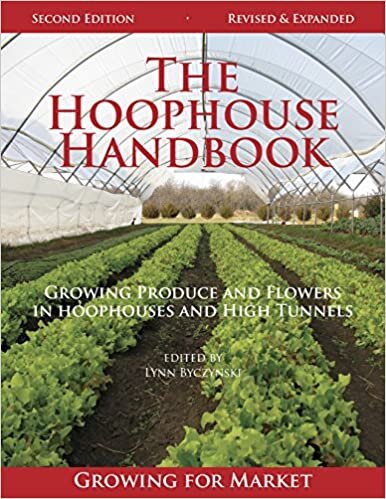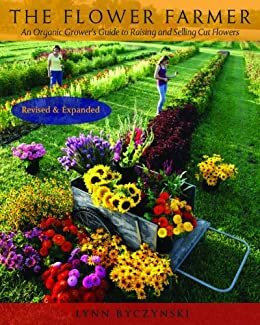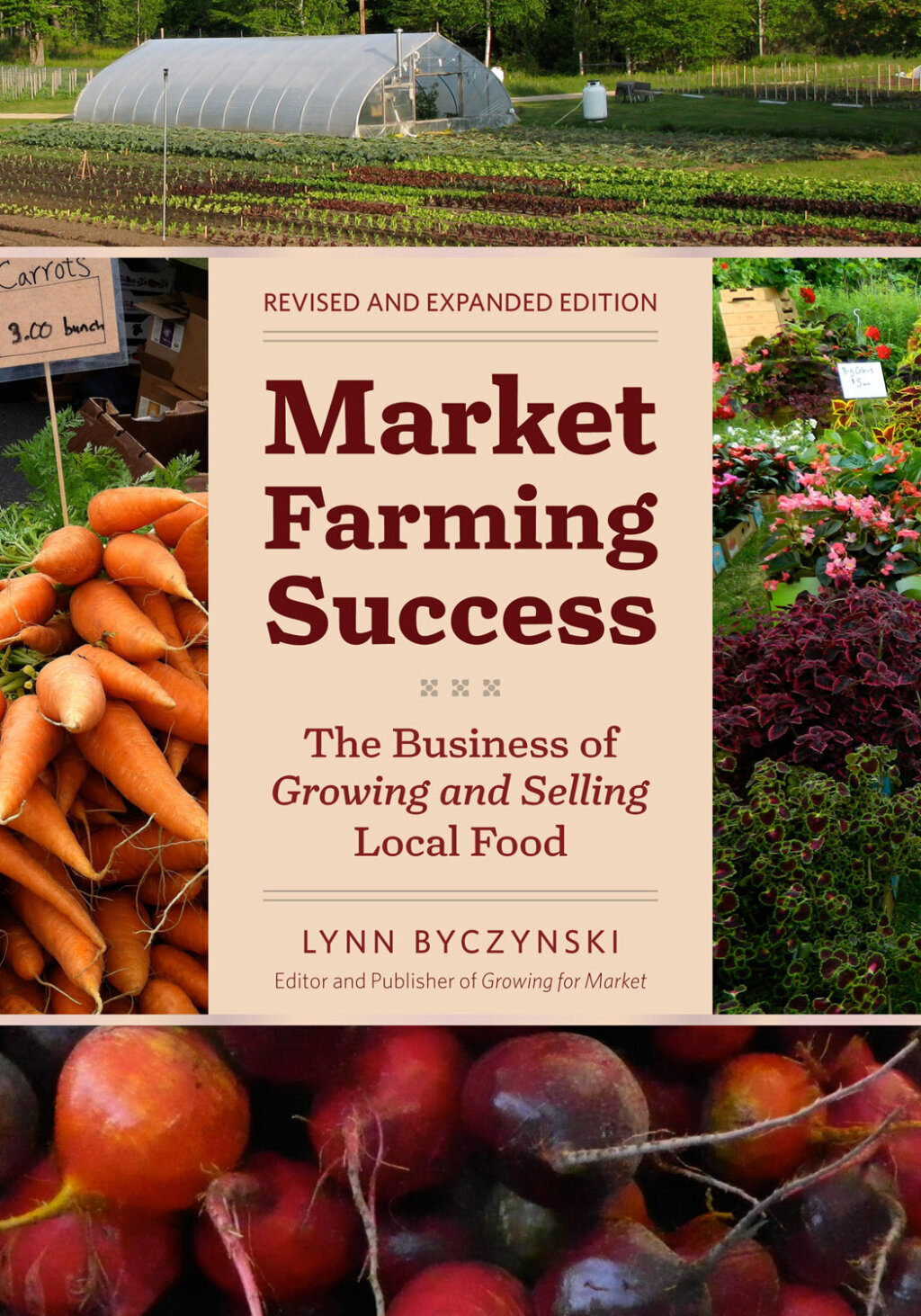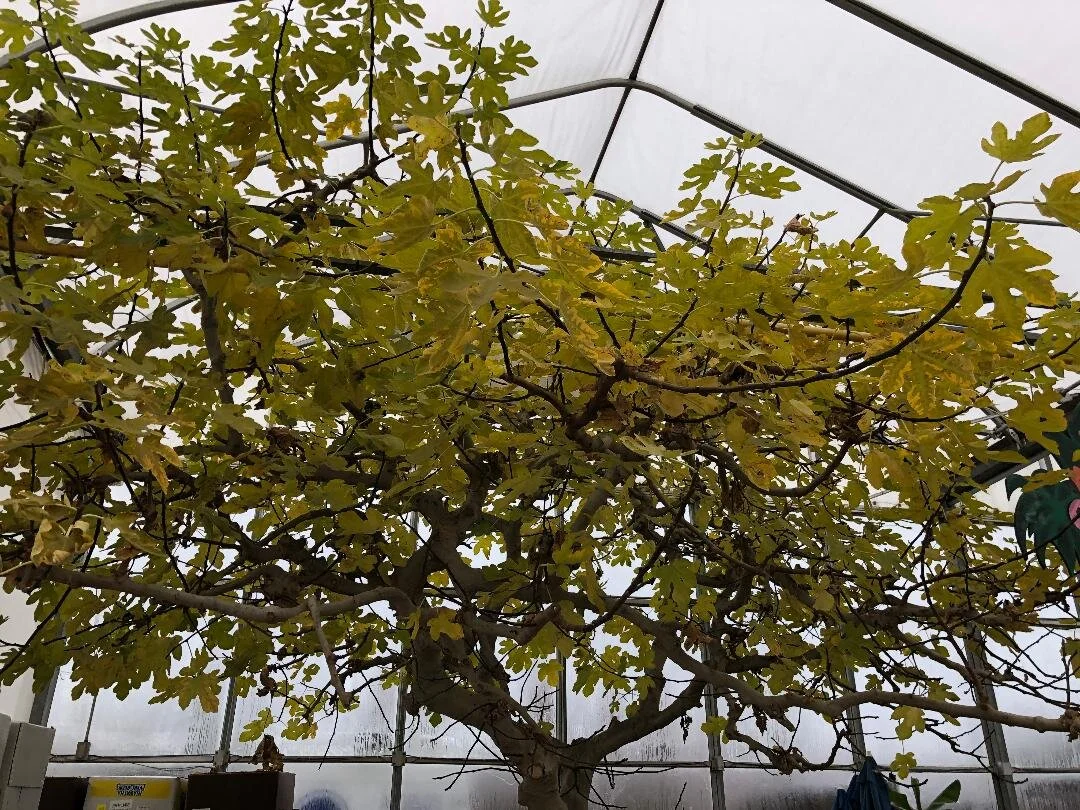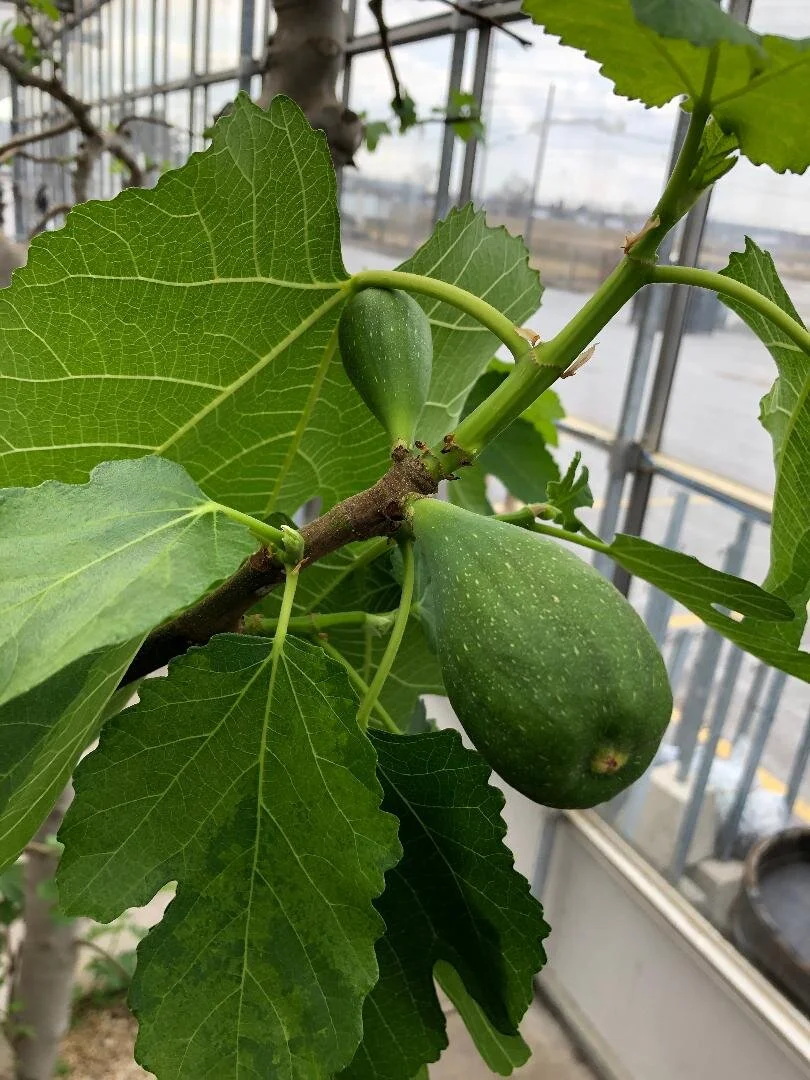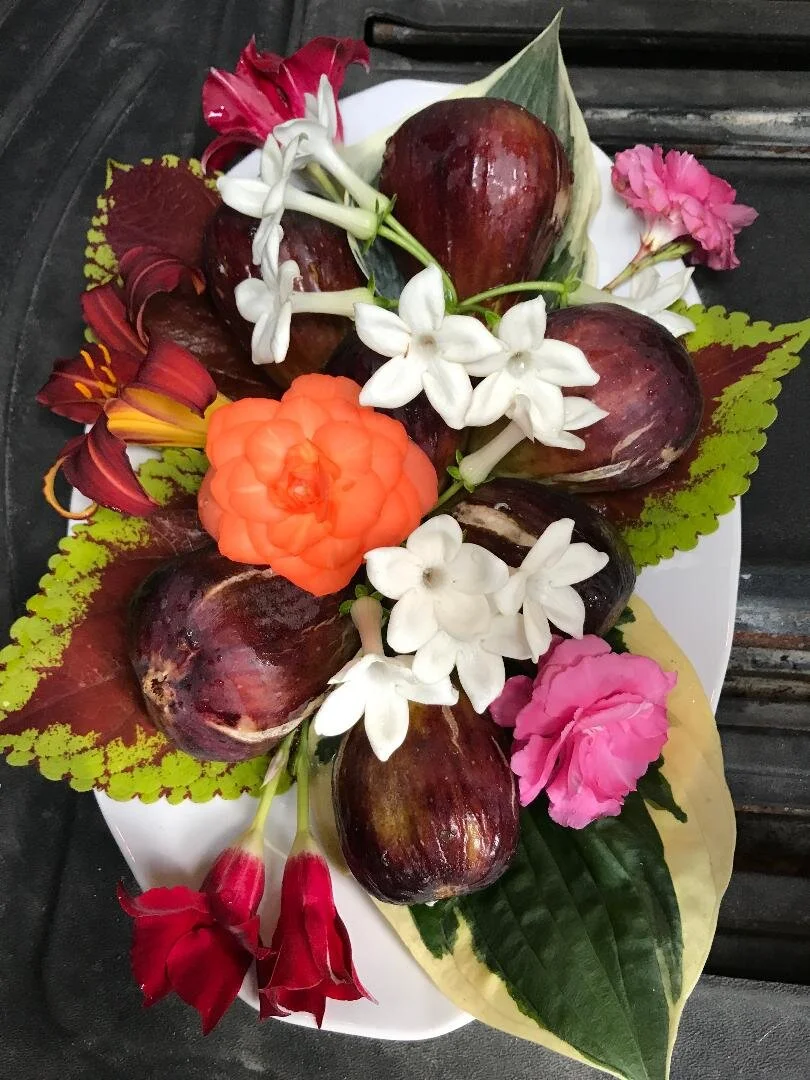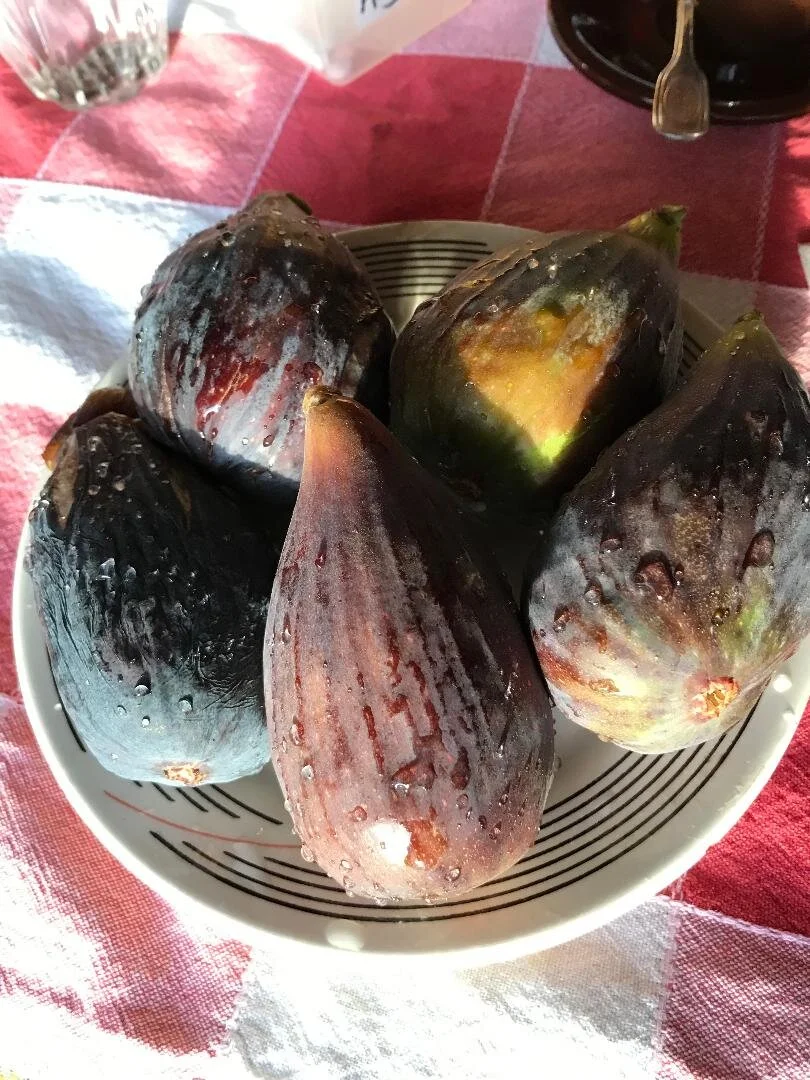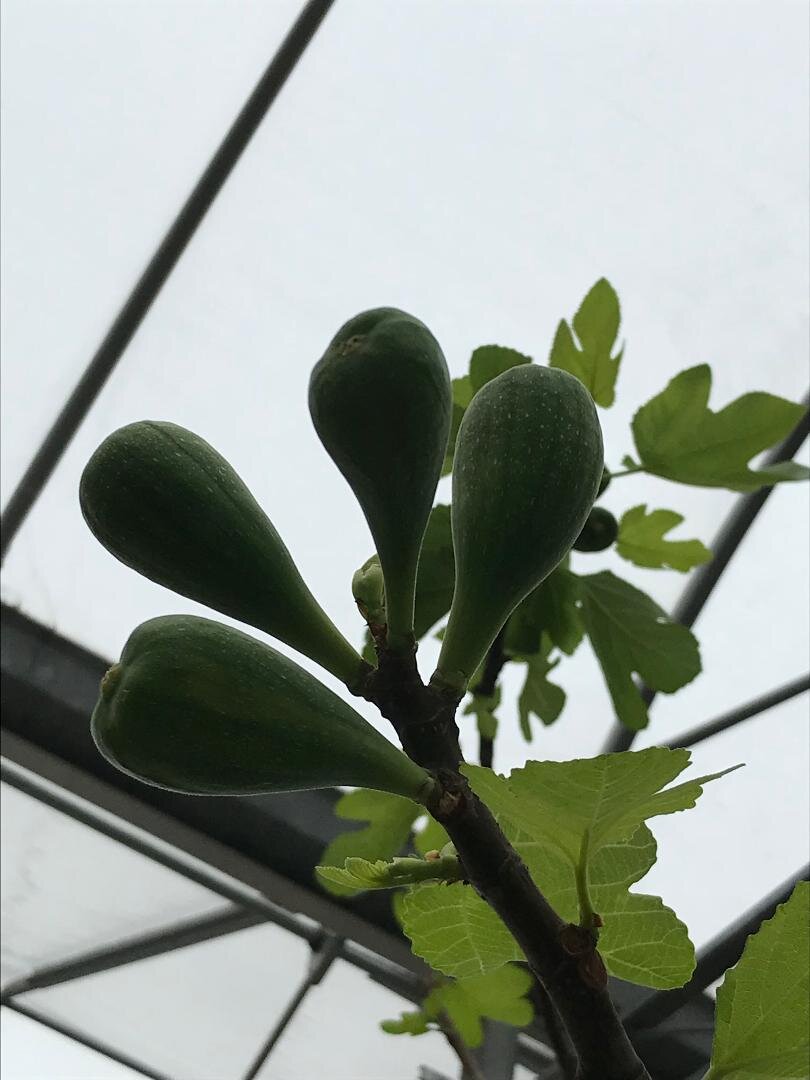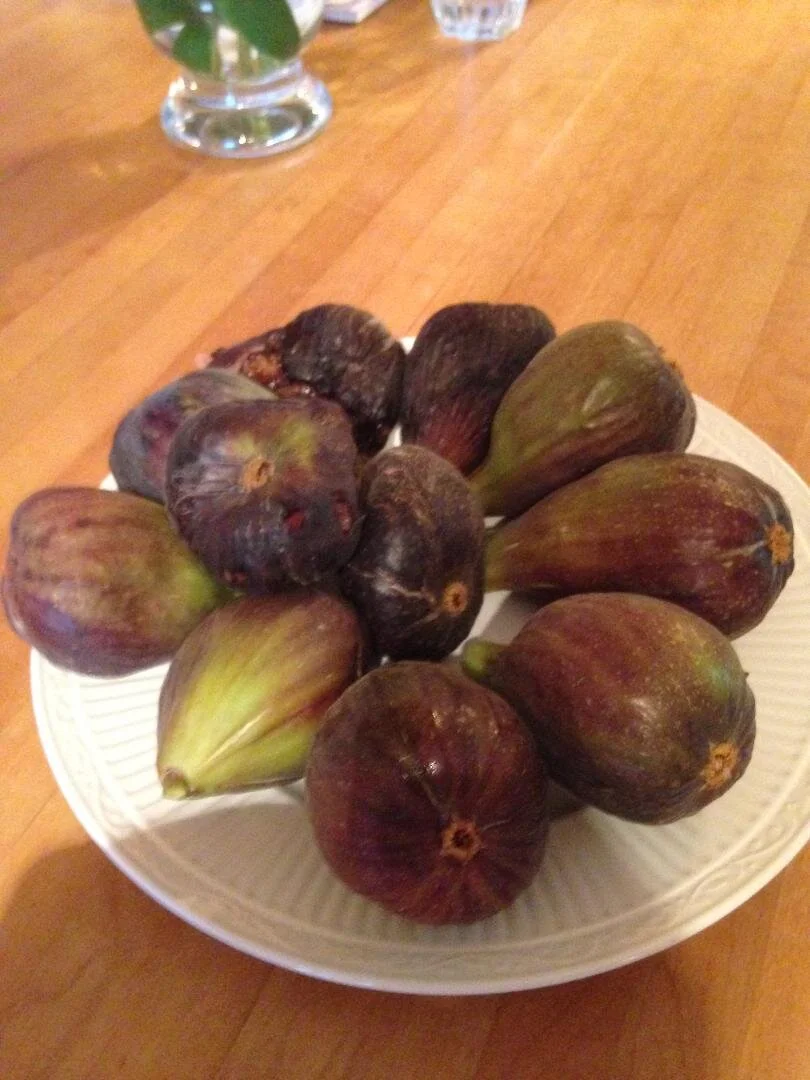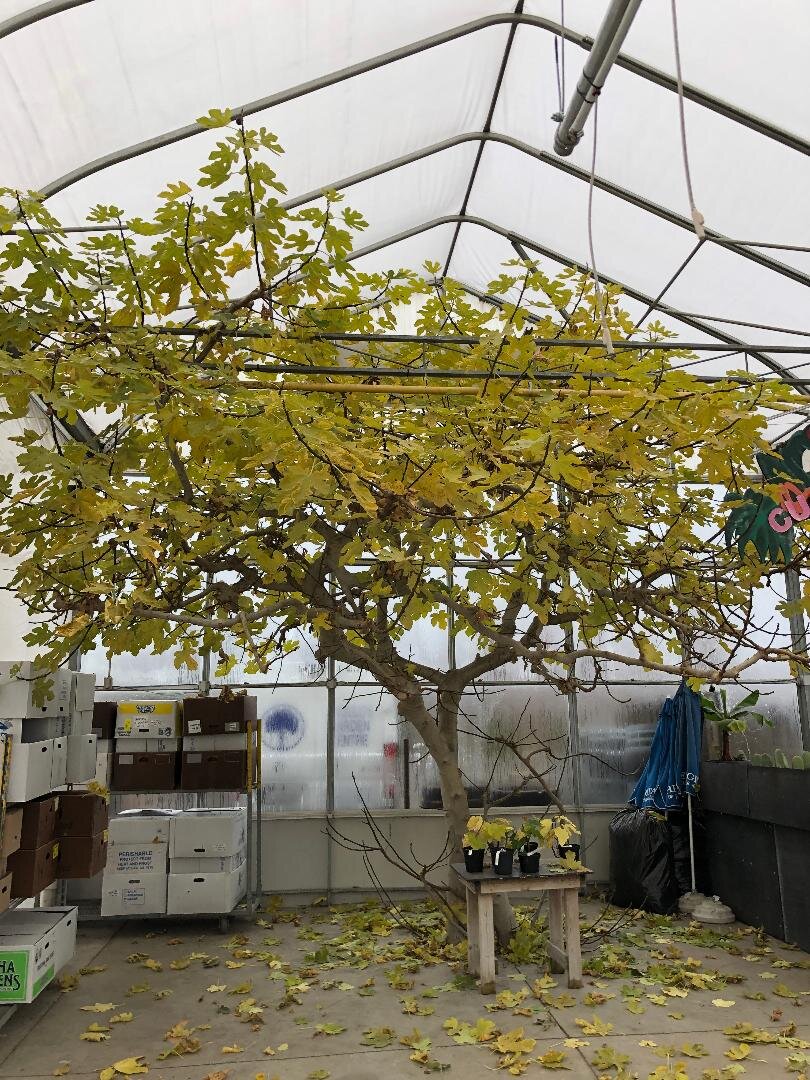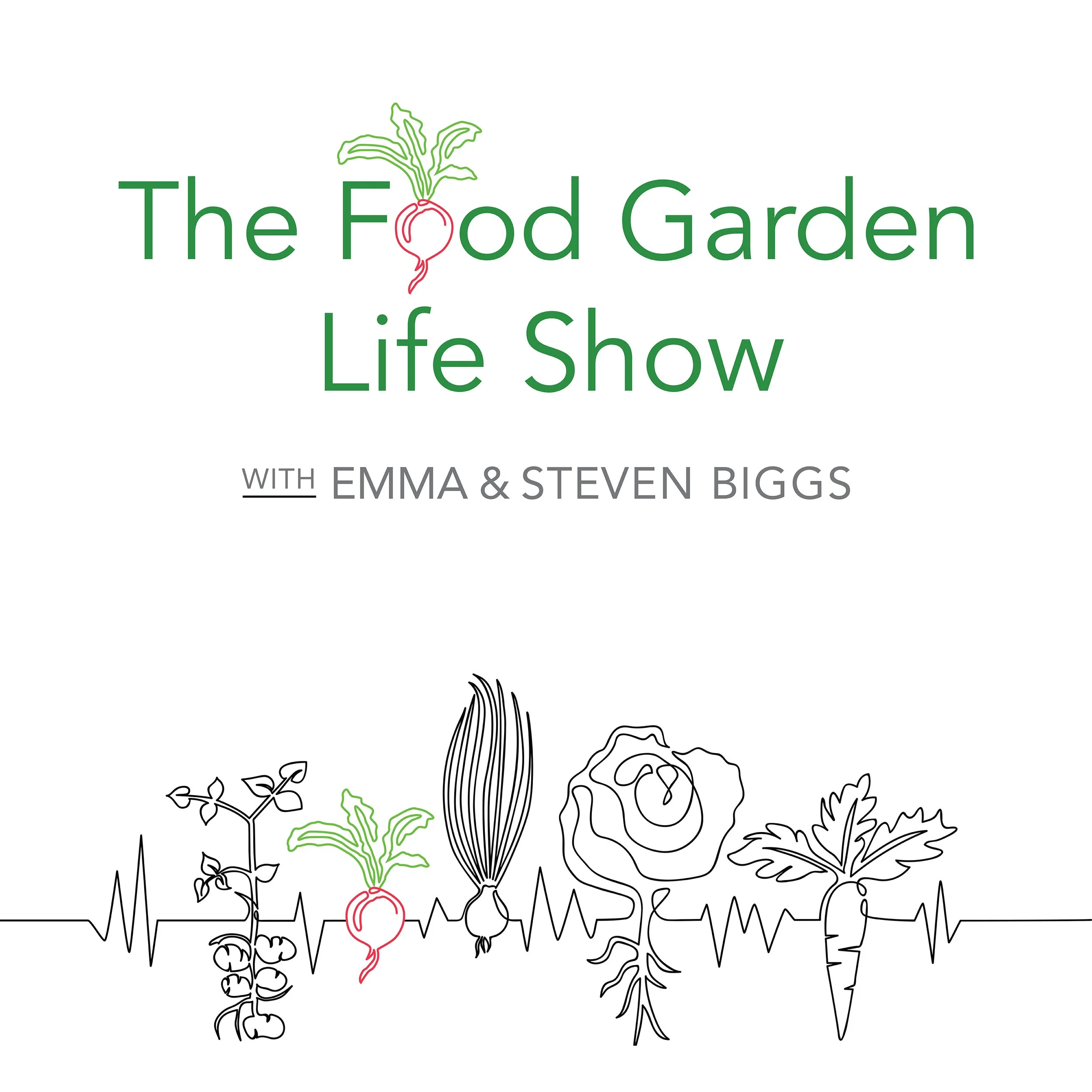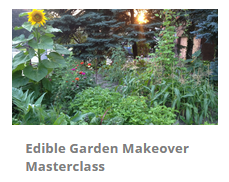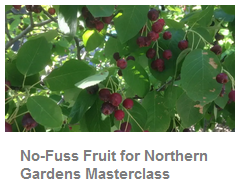No-Dig Gardening
No-dig gardening is good for the soil and for the environment. It’s also good for gardeners—who have less digging to do!
Garden expert Charlie Nardozzi talks about no-dig gardening
In a broadcast that originally aired live on The Food Garden Life Radio Show, we chat with Vermont garden educator and radio host Charlie Nardozzi.
Nardozzi discusses his journey into no-dig gardening—and why it’s good for gardeners, the soil, and the environment.
He also tells us about his new book, The Complete Guide to No-Dig Gardening.
Nardozzi hasn’t always been a no-dig gardener. He used to garden with a gas-guzzling tiller. He shares ideas for gardeners who want to create a new no-till garden, as well as ideas about how gardeners with existing beds can transition them into a no-till system.
No-Dig Gardening by Charlie Nardozzi
Benefits of No-Dig Gardening
Nardozzi says that a key benefit of no-dig gardening is getting more from the same amount of space. Then there’s the work: Once a no-dig bed is established, it requires less heavy digging by the gardener.
There are also other reasons to consider a no-dig approach:
Weed seeds remain buried where they cannot germinate
Carbon remains locked up in the soil
Healthy soil microbe communities feed plants by breaking down organic matter and releasing nutrients
Emma’s Tomato-Talk Segment
In Emma’s Tomato segment, we explore the topic of “keeper” tomatoes. We got quite a reaction on social media a short while back when we posted pictures of bruschetta made from tomatoes we harvested in October. We still have some of those tomatoes in our storage room—and it’s February. They’re not canned, not frozen…they’re keeper tomatoes that store very well.
Biggs-on-Figs Segment
In the Biggs-on-Figs segment, we head to New York State to chat with permaculture teacher and grower Jonathan Bates at Food Forest Farm. He grows figs in a in an old sheep barn that he calls his “figgery”—and uses a “figloo” within it.
Fig plants are trained as “stepover” figs, horizontal cordons low to the ground. After harvest, Bates prunes vertical branches back to the main horizontal trunk, then he makes a figloo over top for winter.
Bates also discusses varieties suited to his climate and growing method. Florea and St. Rita do very well for him.
Youth and Gardening
The theme of the today’s show is youth and gardening.
Vivien Wong, 15-year-old gardener and garden blogger
The theme of the today’s show is youth and gardening.
We speak with 15-year-old gardener Vivien Wong in New York State, who fills her small suburban yard with fruit and vegetables. She has been documenting her gardening journey with the goal of inspiring other teens to grow their own food.
Along the way, she won a prize at the fair!
“Anyone can grow their own food if they get some tips from other gardeners.” Vivien Wong
The Seed
Wong’s interest in gardening started in a fourth grade classroom. After the class grew plants from seed, every student was able to take home a plant. She chose a beefsteak tomato—and hasn’t looked back.
She has found inspiration on Instagram. “As soon as I joined Instagram, I discovered a whole new community of gardeners,” she says.
Kids Gardening
In the second half of the show we chat with Em Shipman, Executive Director of Kids Gardening, a not-for-profit organization with a mission to get kids gardening.
“It’s our job and our passion to support those people that we know are working really hard to provide important, meaningful education opportunities for kids,” says Shipman.
The Kids Gardening website has lesson plans, ideas for activities, and information about grants for community and school gardens.
Her top tips for people new to gardening with children and youth:
Start small. If you haven’t gardened before, a few plants in pots might be a suitable start.
Keep expectations low because learning happens even when it’s not visible.
Things might not go as planned…but that’s an opportunity to learn and to ask questions.
Breeding Tomatoes for the "Holy Grail"
With a reputation for unusual and wildly popular tomato varieties, tomato breeder Brad Gates focuses above all else on flavour.
Brad Gates of Wild Boar Farms on breeding tomatoes.
“I was looking for the holy grail that would have my customers come crawling back on their hands and knees.”
With a reputation for unusual and wildly popular tomato varieties, tomato breeder Brad Gates focuses above all else on flavour.
He didn’t start out working in tomato breeding. While working in the landscape industry, he was asked by a friend to help sell heirloom tomatoes at a farmers market. Gates loved the energy at the market—and he was fascinated with the unusual heirloom tomatoes.
So he started growing, and, eventually, breeding tomatoes.
Tomato Breeding
Gates says that flavour is always his top goal. Other important traits include:
pest and disease resistance
yield
shelf life
Tomato Flavour
Gates says, “Tomatoes have the potential of so many flavour aspects.” These include:
umami
richness
tartness
sweetness
He says that in general, he finds store-bought tomatoes are “one-dimensional.”
Looking Ahead
Heat and cool tolerance are traits that he has found in some of his varieties. For example,
Pink Berkeley Tie-Dye does well in cooler climates such as San Francisco, which is cool and foggy.
Lucid Gem has proven to be very tolerant of hot weather. In heat waves, when other varieties do poorly, Lucid Gem stands up well.
Gates says that he is currently working on small, two-foot-high tomato varieties that produce gourmet tomatoes.
Why small? Gates says, “Why grow one or two varieties when you can grow 10 or 15?”
Home and Community Cold Cellars
What’s old is new: Cold cellars are back. Transition Guelph launches an initiative to build local food-storage capacity through cold cellar education and installations. We find out what they’re doing—and get tips to help you make a home cold cellars.
What’s old is new: Cold cellars are back.
Transition Guelph launches an initiative to build local food-storage capacity through cold cellar education and installations.
We find out what they’re doing—and get tips to help you make a home cold cellars.
We are joined by Steve Tedesco and Ian Findlay from Transition Guelph. Tedesco is a Guelph-area farmer, and Findlay is a contractor specializing in cold cellars.
Why Cold Cellars are Back
Findlay says to think of a cold cellar as a passively-chilled walk-in cooler. He says people with the added food-storage capacity of a cold cellar can store more homegrown produce, and can also stock up on locally grown produce when it is in season.
Tedesco points out that having a cold cellar can change the way meals are planned. “It becomes an active participation sport to manage your cold room and plan your meals around what you have so that nothing goes to waste,” he says.
The Transition Movement
Tedesco explains that the Transition Movement is a global movement focused on building local resilience. Transition Guelph formed in 2009.
Transition chapters undertake projects that strengthen community resilience in six areas:
Food and water
Energy
Environmental stewardship
Economic vitality
Equity in a community
Community engagement
Home Cold Cellars
Findlay suggests spending time to understand 3 key elements to a successful home cold storage.
Ventilation to supply fresh air and exhaust warmer, moist air
Temperature control (the ideal temperature range is 2-5°C)
Humidity (many root vegetables store best in high humidity)
Tedesco and Findlay are finding that many of the newer homes in the Guelph area have a small space under the front porch that is well suited to making into a cold cellar.
Besides making a cold storage under a porch, other approaches include:
Partitioning off an area in the basement
Creating a stand-along cold cellar in a hillside (Findlay talks about concrete bunkers)
A trench storage in garden
Findlay says, “With enough ingenuity and sweat equity you can make any space work.”
Harvest More With Garden Bed Covers
Find out how to use garden bed covers to harvest more and deter pests: row covers, cloches, cold frames, greenhouses.
Niki Jabbour, author of Growing Under Cover: Techniques for a More Productive, Weather-Resistant, Pest-Free Vegetable Garden, talks about using garden bed covers.
In a broadcast that originally aired live on The Food Garden Life Radio Show, we chat with vegetable gardening expert Niki Jabbour about using garden bed covers. She is the author of the new book, Growing Under Cover: Techniques for a More Productive, Weather-Resistant, Pest-Free Vegetable Garden.
Jabbour is a Halifax-based, award-winning author, host of The Weekend Gardener radio show, and one of the experts behind the gardening website Savvygardening.com.
She discusses the benefits of using garden bed covers, choosing covers suited to your situation, how to boost insulation of cold frames, tips for people thinking of a greenhouse, and greenhouse covering materials.
Why use Garden Bed Covers
Jabbour says that there are many reasons to use garden bed covers. “It’s about gardening smarter, not harder,” she says.
Reasons to use garden bed covers include:
Larger harvests
Better ability to control the growing environment
Year-round harvests
Including more “hyper-local” food on the menu
Reduced pest pressure
Creating conditions suited to exotic crops
6 Ways to Boost Insulation of Cold Frames
In Growing Under Cover, she talks about six ways to boost the insulation of cold frames.
Line with foam
Add thermal collectors such as water-filled bottles
Surround with straw or boughs
Bury the cold frame in soil or mulch
Seal the cold frame with weatherstripping
Cover it on cold nights with carpet, old blankets, or some sort of insulating material
Types of Garden Bed Covers
Jabbour points out that not everyone has the space or money for a glass greenhouse. But there are many other options to provide cover for crops. These include:
Row covers
Cloches
Cold frames
Plastic-covered greenhouses
Mini hoop tunnels
Emma’s Tomato-Talk Segment
DO YOU EVER FEEL overwhelmed when trying to choose tomato varieties for your garden? In Emma’s tomato segment, she talks about choosing tomato varieties suited to your garden. She talks about:
Thinking about your own preferences
Days to maturity
Plant size
Disease resistance
Shipping costs
Biggs-on-Figs Segment
Melinda Myers talks about growing figs and artichokes in Wisconsin.
In the Biggs-on-Figs segment, we head to Wisconsin to chat with gardening expert Melinda Myers, who grows figs and artichokes in her USDA zone 4b garden.
A fig grower for over a decade, Myers says she also likes to include figs in her presentations because it gets people’s attention. “It always gets a second glace from anybody in the North or Midwest,” she says.
Find Myers online at melindamyers.com, where she is currently offering a number of free webinars.
Raspberry-Leaf Tea and other uses of the Genus Rubus
It’s an astringent. And it might already be growing in your yard or nearby. Today we take you beyond eating raspberry fruit to explore the herbal and medicinal properties of the plant itself—along with its relatives in the genus Rubus. Ever heard of raspberry-leaf tea? Tune in, and find out about the many uses of this plant.
Conrad Richter from Richters Herbs talks about the genus Rubus and its medicinal and herbal uses, such as raspberry-leaf tea.
It’s an astringent. And it might already be growing in your yard or nearby. Today we take you beyond eating raspberry fruit to explore the herbal and medicinal properties of the plant itself—along with its relatives in the genus Rubus.
Ever heard of raspberry-leaf tea? Tune in, and find out about the many uses of this plant.
Raspberry Family
Conrad Richter from Richters Herbs joins us to delve into the history, herbal, and medicinal properties of the approximately 700 species of the genus Rubus.
Science meets History
Richter, who trained in botany, also has a keen interest in history. “I do straddle those two worlds very well,” he says.
He says that the earliest recorded use of Rubus dates back 10,000 years. And 2,000 years ago, the ancient Greeks recorded its use for treating diarrhoea. As an “astringent,” a class of herbs that shrinks tissue, it’s medicinal properties were well documented.
Fast forward to the present day, and Richter says that there is interest in using Rubus leaves in creams to “tonify” the skin, and in the health benefits of the anthocyanins in the fruit.
Cultivate a Taste for Bitter Foods...and Cardoon Plants
Toronto chef and author Jennifer McLagan talks about how to cook bitter foods such as cardoon plants. Photo by Shane Reid.
Chef and author Jennifer McLagan joins us to talk about bitter foods, explaining what bitterness is, and how to effectively use bitter in the kitchen.
McLagan is the author of the book, Bitter: A Taste of the World’s most Dangerous Flavor, with Recipes.
The Loss of Bitter
McLagan recalls the grapefruit that her mother served her as a child. They had a slight bitterness—an “edge.” Her mother balanced that bitterness with a sprinkle of sugar on top.
McLagan says bitterness has been bred out of modern grapefruit. Now they’re sweet and pink…with no bitterness.
That loss inspired her book. “They don’t taste like grapefruit any more,” she says.
What is Bitter?
McLagan says that many people confuse bitter with sour. It is different from sour—one of the four basic tastes, along with sour, sweet, and salty.
“It adds a complexity and depth to the food,” says McLagan, explaining that using bitterness—like salt—makes food more interesting and less flat.
Cardoon plants are one of the bitter foods in Jennifer McLagan’s book, Bitter
She gives the example of crème brulée: The caramel topping has a bitter edge, which plays well with the sweet, rich pudding below.
Cooking with Bitter Foods
McLagan says that bitter is not as popular in North American cuisine as it is in other parts of the world. “The American palate is very geared towards sweet,” she explains.
Bitter pairs well with fat and with sweetness. “Bitter and fat are the two perfect things; one rounds out the other,” she says.
Here are ideas for using bitter in the kitchen:
McLagan talks about making turnip ice cream. She also suggests caramelizing turnips, which go well with baked apple or apple pie.
McLagan suggests cooking Belgian endive in butter (because fat and bitterness work well together) and then using that juice to make béchamel sauce, with added emmenthal cheese, to serve over top of the Belgian endives.
She has surprises in her book! There is a pannacotta with tobacco. McLagan says that small pieces of cigar give it a complex taste. A pannacotta is rich and creamy, and the bitterness from the tobacco comes through very gently at the back of the throat, making it a much more complex dish.
How to Cook Cardoon
For those who have never seen cardoon, McLagan describes it as “celery on steroids.” It has big, wide ribs. And it’s in the cover photo of her book.
The part of the plant that is eaten is the leaf rib. The rest of the leaf is discarded.
She describes it as having an artichoke-and-mushroom flavour—one that will seduce you once you appreciate the bitterness.
Here are McLagan’s tips for preparing and cooking cardoon:
Cut the cardoon stalks from the base.
Remove the spikes along the edge of the rib using a knife.
Next, remove the strings from the stalk (it’s like pulling the strings from a celery stalk).
McLagan finds a sharp knife works better than a vegetable peeler because there are a lot of strings and a peeler plugs up.
Once the stalks are prepared and you begin to chop them, you might find additional strings. If so, remove them.
Once chopped, place them immediately into water with lemon juice to prevent them from browning.
Cook in salted water until tender (the salt is important because salt helps pull out bitterness).
Drain.
Remove any remaining strings.
She says a great way to serve cardoon is with a cheese sauce. “When you put cheese on something, people love it,” she says.
MgLagan notes that the inner stalks are milder, with a better texture. They are less stringy, with a delicate silver-green colour and feathery leaves. She advises using stringy outside stalks for soup; and the more tender inside ones for a gratin or salad.
Here are the cardoon recipes she includes in the book:
Cardoon gratin
Cardoon soup
Warm cardoon and potato salad
Cardoon beef tagine
Cardoon cheese
Cardoon and bitter-leaf salad
Cardoon with braised bitter greens,
My daughter Emma with a cardoon flower. The plants have great ornamental value too.
Bitter in the Garden
One of the challenges—and delights—of growing new food crops in the garden is figuring out how to use them in the kitchen. Looking to add bitter to your garden? Here are ideas:
Arugula
Belgian endive
Cardoon
Citrus rind
Olives
Radicchio
Turnip
Tasty Tomatoes for Small Spaces: The Dwarf Tomato Breeding Project
We’re joined by tomato expert Craig LeHoullier to talk about the Dwarf Tomato Breeding Project, preserving seed varieties, and to find out what’s new in his garden.
LeHoullier, an avid seed saver with a passion for saving and sharing heirloom tomato varieties, says that his seed collection contains somewhere between 50,000 and 70,000 seed packets.
Dwarf Tomato Breeding Project
The project began in 2004. LeHoullier was getting a lot of questions about compact varieties at his annual tomato-plant sale.
He explains that dwarf tomato varieties, which grow vertically at approximately half the rate of other indeterminate tomato varieties, already existed at the time. But these dwarf varieties were obscure and hard to find.
He teamed up with a friend in Australia to start breeding new dwarf tomato varieties. That initiative soon grew into an open source, volunteer-run, worldwide breeding project. The goal was to breed stable, open-pollinated, dwarf tomato varieties from which gardeners could save their own seed.
The project began releasing dwarf tomato varieties to seed companies in 2010.
By 2020, 135 varieties had been released. And the project continues!
Farming Cold-Hardy Citrus in South Carolina
The Johnny Appleseed of cold-hardy citrus, Stan McKenzie, joins us to talk about how to grow citrus in cold climates.
McKenzie talks about how he became a "citraholic" and started down the path of growing citrus on his USDA Zone 8 farm and nursery in South Carolina.
McKenzie Farms specializes in citrus suited for cold climates.
McKenzie says that he coined the term “citraholic” to describe people with a citrus-growing obsession. “It’s not really expensive, and the hangover isn’t nearly as bad,” he says with a laugh.
Getting Started in Cold-Hardy Citrus
He recalls his parents taking him to visit his grandmother when he was a child. Near her house was a scraggly tree that died back to the ground every winter. When he learned it was an orange tree, he was fascinated, and asked his dad to order citrus trees from Florida for their farm.
“Every one of them was killed the very first winter,” he says, explaining that he and his father didn’t know how to overwinter citrus.
Fast forward many years, while visiting Charleston, South Carolina, McKenzie saw a grapefruit tree loaded with golden grapefruit. “It lit the match again,” he says.
As he researched cold-hardy citrus he learned that satsuma trees are grown commercially in colder parts of Japan. It wasn’t long before he started growing satsuma. As his satsuma tree grew and prospered, everybody who saw the tree wanted one.
“That put me in the citrus business,” he says.
Cold-Hardy Citrus Tips
Overwintering Citrus Outdoors
McKenzie says that when overwintering in-ground citrus plants in borderline areas such as his, some citrus enthusiasts wrap the tree in a string of incandescent lights and then cover it with and insulating material. The lights give off enough heat to get the citrus plant through especially cold weather.
Another technique is “micromisting,” where a fine mist of water is sprayed over the trees. As the water freezes, it gives off heat—enough heat for the citrus plants to survive cold weather.
Overwintering Citrus Indoors
Where winter temperatures are more severe, people often bring potted citrus plants into the house over the winter. McKenzie says that the biggest challenge with this technique is that the air in most homes is too dry, causing the plants to drop leaves. The well-known Meyer lemon is especially finicky, he says. However, leaves will grow back in spring.
To maintain a higher humidity that is better suited to citrus plants, he recommends filling a tray (such as the foil trays sold for roasting turkeys) with pebbles and water. He says that spritzing with water regularly helps too.
Top Questions
Thorny growth at the base of the plant. McKenzie explains that many citrus are grafted onto a rootstock of trifoliate orange—a very thorny plant. Sometimes that root will send up a shoot, which, if left to grow, it will overtake the desired variety grafted onto it.
Wrinkled leaves and squiggly lines. He says that this is caused by an insect pest called the citrus leaf miner, which tunnels inside the leaf. While unsightly, they do no harm to the plant and do not affect the fruit.
Common Cold-Hardy Citrus
Prague Satsuma. This hardy satsuma survived the 8°F (-13°C) weater that killed many of the other satsuma varieties in his orchard.
Thomasville Citrangequat. McKenzie says that this cold-hardy citrus is a good lime substitute.
Crosses with trifoliate orange. He says there are many crosses with trifoliate orange that have excellent cold hardiness, but the fruit is usually bitter.
Yuzu, aka Japanese lemon, is very cold-hardy. He knows of people growing this citrus in colder areas such as Raleigh, North Carolina.
Poncirus Trifoliata (a.k.a. Trifoliate Orange)
The trifoliate orange, also known as trifoliate lemon and Poncirus, is extremely hardy, surviving in areas colder than USDA Zone 7. It is a common rootstock. McKenzie says that the small fruit are very seedy and bitter.
Connect with Stan McKenzie
Website: mckenzie-farms.com
Facebook: McKenzie-Farms-Nursery-174405135904728
Find Out How to Grow Your Own Lemons
Grow Lemons in Cold Climates Masterclass shows you how to grow a lemon tree in a pot or outside with protection. And get lemons!
Looking for More Citrus Information?
Plant Partners: Science-Based Companion Planting
Jessica Walliser, author of Plant Partners: Science-Based Companion Planting Strategies for the Vegetable Garden
We’re joined by Pittsburgh-based horticulturist and author Jessica Walliser to talk about her new book Plant Partners: Science-Based Companion Planting Strategies for the Vegetable Garden.
There is a lot of folklore that finds its way into discussions about companion planting. Walliser explains that her hope is to reboot the term “companion planting” by looking at it through a scientific lens.
What is Companion Planting?
Walliser says that companion planting is purposely planting two or more plants close together to get some sort of benefit.
Companion planting does not have to mean putting two plants together at the same time, however; it can also mean growing plants in succession.
Common terms used in science that overlap with the idea of companion planting are:
Intercropping
Plant partners
Interplanting
Polyculture
Benefits of Plant Partners
In her book, Walliser has chapters on seven different benefits of using plant partners in the vegetable garden.
Soil preparation and conditioning
Weed management
Support and structure
Pest management
Disease management
Biological Control
Pollination
An example of pest management is using “trap crops” to lure pests away from other crops. Squash bugs prefer blue hubbard squash to other squash varieties—meaning it can be used as a “trap crop.”
A plant partnership that helps to control aphid problems on lettuce is to grow sweet alyssum as a partner. The alyssum flowers are a favourite of both predatory and parasitic insects that help to control aphids.
For weed management, there are cover crops that suppress growth of weed seeds the following season. Those same cover crops also build soil structure as they decompose.
Living trellises are functional and can be aesthetically pleasing. A good example is using corn with beans.
Ever Heard of “Biodrilling”
An example of a plant partnership to help prepare the soil is the use of deep-rooted forage radishes as “biodrills” on heavy clay soil.
These plants have long tap roots that penetrate heavy soil. The roots are left in the soil to decompose instead of harvesting them. Walliser explains that it’s like using a living drill instead of tilling the soil!
From Market Farming to Italian Seeds
Will Nagengast and Lynn Byczynski, talk about their family business Seeds from Italy, food, and market farming
We head to Kansas to speak with Lynn Byczynski and Will Nagengast about market farming, cut flowers, farm journalism, Italian culinary traditions, and seeds. Their family business is Seeds from Italy.
Byczynski founded Growing for Market, a magazine for market farmers. She is the author of Market Farming Success, The Flower Farmer: An Organic Grower’s Guide to Raising and Selling Cut Flowers, The Hoophouse Handbook.
The Journey into the Seed Business
Byczynski says that when the farm wasn’t enough to support the family, she branched out into producing Growing for Market using her background in journalism and newspaper reporting.
She found that the writing and farming fed off of each other: While interviewing people for articles, she heard ideas that they could try on their farm; and things they were doing on their own farm could be shared with other farmers in Growing for Market.
Seeds from Italy
She says the hair on the back of her neck stood up when an advertiser for her Growing for Market newsletter told her that the sale of his Italian seed distribution business had fallen through. “I could just feel this was the next thing we were going to do,” she says.
The first thing that the family did after taking over Seeds from Italy was to take a trip to Italy to meet the owners of Franchi Seeds, the company whose seed they would be distributing in the United States.
Nagengast and Byczynski say that once home, they immersed themselves in the varieties they were selling by having weekly Italian-themed meals cooked with the Italian varieties they distribute.
Italian Seeds in North America
Italy has a varied climate, with many regional vegetable varieties. They list 23 varieties of zucchini! Most of these different varieties, they explain, are regional varieties.
For North American gardeners thinking about what Italian varieties are best suited to their gardens, they recommend looking to areas of Italy with a similar latitude.
Angelo's Fig Tree
In the Biggs-on-Figs segment for December 2020, we head to the Toronto suburb of Vaughan to get the scoop on the fig tree at Angelo’s Garden Centre.
Over the years Steven has had lots of people ask whether he knows of the tree. He sure does—he’s long admired it.
He finds out about the history of the 19-foot-high fig tree from Carlo Amendolia, owner of Angelo’s Garden Centre.
Grow Herbs in Containers
Herbs in Pots
In a broadcast that originally aired live on The Food Garden Life Radio Show, we chat with herb expert Sue Goetz about growing herbs in containers.
Goetz is an award-winning garden designer, writer, and speaker. Her motto is “Inspiring gardeners to create.” She gives us creative ideas for growing herbs in containers and for using herbs.
Goetz also shares ideas from her new book, Container Herb Garden Complete: Design and Grow Beautiful, Bountiful Herb-Filled Pots.
She is also the author of The Herb Lover’s Spa Book and A Taste for Herbs.
Emma’s Tomato-Talk Segment
In Emma’s tomato segment, we talk about some of Emma’s top tomato-variety recommendations for 2021.
Biggs-on-Figs Segment
In the Biggs-on-Figs segment, we head to the Toronto suburb of Vaughan to get the scoop on the fig tree at Angelo’s Garden Centre.
Over the years Steven has had lots of people ask whether he knows of the tree. He sure does—he’s long admired it.
He finds out about the history of the 19-foot-high fig tree from Carlo Amendolia, owner of Angelo’s Garden Centre.
Pictures of Angelo’s Fig Tree
Using Small Edible Landscapes to Make Big Change
We speak with author, educator, and edible-ecosystem designer Zach Loeks from Eastern Ontario.
A former market gardener, Loeks has converted his farm into the production of berries, fruit, and edible perennials.
He is also the director of the Ecosystem Solution Institute, which is involved in education projects such as an edible-biodiversity conservation area near Ottawa, Ontario. The site includes herbs, fruit trees, berry bushes, and ground covers, all labelled with interpretive signs.
He believes that many small actions can add up to big change. In his new book, The Edible Ecosystem Solution, he talks about ways to grow edibles, even in small spaces.
Starting Small
Loeks says, “I really believe in the power of the micro-landscape.”
For people interested in incorporating edible plants into a landscape, but unsure where to begin, Loeks shares a couple of tips:
Design around the lines on the property: Build out from lines such as fence lines, where sidewalk meets the yard, and the edge of the house.
Connect the dots: Connect the dots between existing ornamental trees instead of starting from scratch. Plant shrubs and herbs beneath the trees. It can be practical too: rather than having to cut the lawn around a tree, it’s easier to cut along the edge of a bed of edibles.
Beautifully Promiscuous and Tasty Tomato Project
We speak with farmer and plant breeder Joseph Lofthouse in northern Utah about breeding tomatoes, and his work with The Beautifully Promiscuous and Tasty Tomato Project.
Lofthouse focuses on breeding landrace crop varieties that are are locally adapted and genetically diverse.
Living in a mountain valley with cold nights and only gets 100 frost-free days, his work breeding tomatoes started out with the simple goal of breeding varieties suited to his growing conditions. “If I wanted to grow tomatoes, I basically had to breed my own tomatoes,” he explains.
He has found much more than cold tolerance.
The Beautifully Promiscuous and Tasty Tomato Project
Lofthouse explains that when tomatoes were domesticated, most of the genetic diversity was lost. So his breeding work has focused on reintroducing wild tomato genetics, with the hope of finding desirable traits not found in domesticated tomatoes.
Along with cold tolerance, the his tomato breeding has produced tomatoes with novel flavours. He says that tropical flavours such as citrus, guava, and mango are appearing. So, too, are other flavours, including smokiness and umami. One chef described the taste of one of the tomatoes as resembling sea-urchin.
While domesticated tomatoes mainly self-pollinate, wild tomatoes, he explains outcross. They readily cross with each other. Hence the use of the word promiscuous in the project name.
Other traits he has encountered in the trials include:
Shrubby growth — something he thinks could offer interesting harvest opportunities
Dense foliage, which could be useful in shading the ground below to minimize week competition
Sprawling growth like a squash plant
Canadian Garden Zones vs. US Garden Zones
Helen Battersby of torontogardens.com
We are joined by Helen Battersby, a Toronto garden blogger, garden coach, and publisher of the Toronto & Golden Horseshoe Gardener’s Journal.
She explores a topic that a lot of new gardeners are not even aware of—that there are different garden-zone systems used in Canada and the USA.
Always eager to push zone boundaries, Battersby finds that many gardeners live in a state of “zone denial.”
Garden Zones
Battersby talks about the difference between the Canadian and American garden zone systems—both of which provide gardeners with a zone number to use when selecting hardy plant material. The lower the number, the colder the garden zone.
She points out that while her garden is a zone 6 using the Canadian system, it’s a zone 5 using the American system.
The Canadian system uses a number of variables including lowest mean temperature of the coldest month, highest mean temperature of the hottest month, precipitation, and the number of frost-free days.
The American (U.S. Department of Agriculture, or USDA) zones are based solely on average annual minimum temperatures.
She likens the Canadian system to a Betamax; and the US systmem to the VHS.
TorontoGardens.com
Battersby and her sister, Sarah, run the award-winning blog torontogardens.com.
They started the blog at a time when a lot of Canadian gardening magazines were folding, with a goal of filling the gap left by the loss of the gardening magazines.
The Toronto & Golden Horseshoe Gardener’s Journal
The journal, in its 29th year, was started by Margaret Bennet-Alder. She entrusted the publication of the journal to the Battersby sisters when she was 90.
The journal was born out of tragedy. Bennet-Alder’s son David was diagnosed with schizophrenia. To track his medications and appointments, he created a booklet that had a pair of pages for each week. She saw his book with its seven weekdays, along with an empty eighth space. She decided to use that empty space for garden tasks. And so was planted the seed for The Toronto Gardener’s Journal.
Her son helped her refine the design and taught her how to use software for the creation of the first print run of 500. It became a meaningful project for the both of them.
Growing Perennial Vegetables
We chat with Ben Caesar about perennial vegetables and salad greens. Caesar, who runs Fiddlehead Nursery, specializes in perennial edibles.
He says that in Western cultures, annual vegetable crops are the norm. But with a shift in thinking, it’s easy to incorporate perennial vegetables into the diet.
That shift to perennial vegetables is good because not only can they be easier for gardeners to manage—they require less soil tilling, which means less release of carbon that’s locked up in the soil.
Top Perennial Edibles from Caesar’s Garden in 2020
Seedless sorrel is his all-time favourite this year, a very productive green that he recommends as a “bombproof groundcover”
Caucasian spinach is a little-known vine with excellent ornamental properties
Cutleaf coneflower is a native perennial that produces edible greens in the spring, and 6’ tall flowers in summer
Oxeye daisy, a common roadside weed in Ontario, is a European perennial that has naturalized, with leaves that he says are delicious
Patience dock has leaves that can grow up to 2’ long, but he says to use them when about 1’ long, fresh, cooked—or as a wrap as is often done with grape leaves
Garlic chives are often grown as ornamentals…and he suggests eating leaves and flowers
Bronze fennel has greens with a sweet, anise flavour, and seeds that can be eaten as a palate cleanser and used in pickles
Honewort is a shade-loving native perennial with leaves that Caesar says are delicious
Tips to get Started with Perennial Vegetables
Caesar says that if you already have a perennial garden, chances are that you might already be growing edible plants. Here are common edible plants that he says many people already have in their gardens:
Hosta
Solomon’s seal
Daylily
Stonecrop sedum
Creating New Tomato Varieties
Tomato expert Linda Crago with Emma at a seed exchange.
Tomato expert Linda Crago joins us to talk about how to create a new tomato variety.
At her Tree and Twig Heirloom Vegetable Farm in the Niagara Region of Ontario, she raises hundreds of varieties of tomatoes.
This past summer, Emma grew a couple of tomato varieties that Crago released. She tells us what she did to get them—and shares tips on creating new tomato varieties.
Accidental Crosses
“One was an accidental cross and I was delighted to see it,” says Crago as she talks about ‘TT Baby Blue.’
‘TT Baby Blue’ appeared on its own, from a tomato plant that self-seeded in one of her fields. She thinks that it’s a cross between a blue tomato and one of the currant-type tomatoes.
Crago says that she saved seeds from it and grew the seeds the following year, keeping seeds only from tomatoes that resembled the parent. She did this for six years, which she says is often how long it will take before a new variety becomes “stable.”
De-hybridizing a Hybrid Tomato
Crago says that a lot of people don’t save seeds from hybrid tomatoes because there is no knowing what those seeds will grow into. “You might get somethign you like,” she says.
A few years ago she saw a very interesting tomato at her local grocery store. She bought is so that she could save seeds from it. Those seeds gave her quite a great variety of plants. “I got multiple varieties; not many looked like the original tomato,” she says.
But one of those plants had tomatoes with a peanut-like shape that caught her eye. She grew and selected for that peanut shape for a number of years. Once it was stable, she named the variety ‘Zemoltt.’
Backyard Breeding: Cold-adapted Watermelon, Red-Podded Peas, Tomatoes
Colorado gardener and backyard plant breeder Andrew Barney
We speak with Colorado gardener and backyard plant breeder Andrew Barney about his work developing red-podded peas, cold-adapted watermelons, and new tomato varieties.
Connecting with Other Breeders
Barney connects with other plant breeders through seed swaps, social media groups, and online forums.
He says many people who are interested in plant breeding and preserving plant varieties are happy to share plant genetics.
“If people have something exciting they’re willing to share it.”
Approaches to Breeding
With his pea breeding, barney manages the crosses. It means that he spends time pollinating.
There are also breeding approaches that require less effort, such as landrace-style breeding he's using for his watermelons. In this approach, a number of varieties are planted in the same plot, and cross-pollination is left up to pollinating insects. The job of the breeder is then to select which resulting melons are worth saving seeds from to grow the following year. He’s been working on his melons now for about 10 years.
He’s also involved in The Big Wild Tomato Breeding Project, which he explains is introducing wild tomato genetics. The results, he says, are encouraging, with some participants reporting tomatoes with new flavour profiles that are described as being similar to mango and pineapple.
Top Tip
His advice to would-be backyard plant breeders is, "Just try it!"
Downtown Rooftop Edible Garden Gives a Breath of Fresh Air
Saskia Vegter, Urban Agricultural Co-ordinator at 401 Richmond
We’re joined by Saskia Vegter, the Urban Agricultural Co-Ordinator at 401 Richmond, a former industrial building that has been transformed into a cultural hub in a dense downtown Toronto neighbourhood.
Vegter, who previously worked in event management, felt drawn to work in horticulture.
"I just remembered the feeling of connection when my hands were in the soil.”
401 Richmond
401 Richmond is a former industrial building, built in 1899. Vegter explains that the currant owner restored the building to transform it into a cultural hub for artists and creative entrepreneurs.
Tenants currently include art galleries, a book publisher, a film festival, artists with studios, and a daycare.
The Rooftop Gardens
401 Richmond rooftop garden
The rooftop has three garden areas:
A deck-patio area, which includes trees and shrubs in containers
An extensive sedum green roof
The “mini farm,” which has fruit, vegetables, herbs, and flowers for cutting growing in containers
Tenants use the rooftop for meetings, lunches, to meditate—or just to get a breath of fresh air, says Vegter.
Children from the daycare often spend time on the rooftop, which provides the opportunity for activities such as herb tasting.
Rooftop Crops
Ultra-dwarf apple trees grow in the same containers as the chums (cherry-plums), with strawberry plants at the base
Luffa grows up the pergola
Planters with edibles are planned for edibility AND colour, using plants with ornamental properties
New to the garden this year is a fig tree
Wildlife on the Rooftop
Despite being on a rooftop in a downtown neighbourhood, Vegter says that there are lots of visitors. She laughs as she talks about the squirrel that left her gifts of half-eaten tomatoes during the summer.
She says that other wildlife includes swallowtail caterpillars, hummingbirds, honeybees, and ladybugs.


